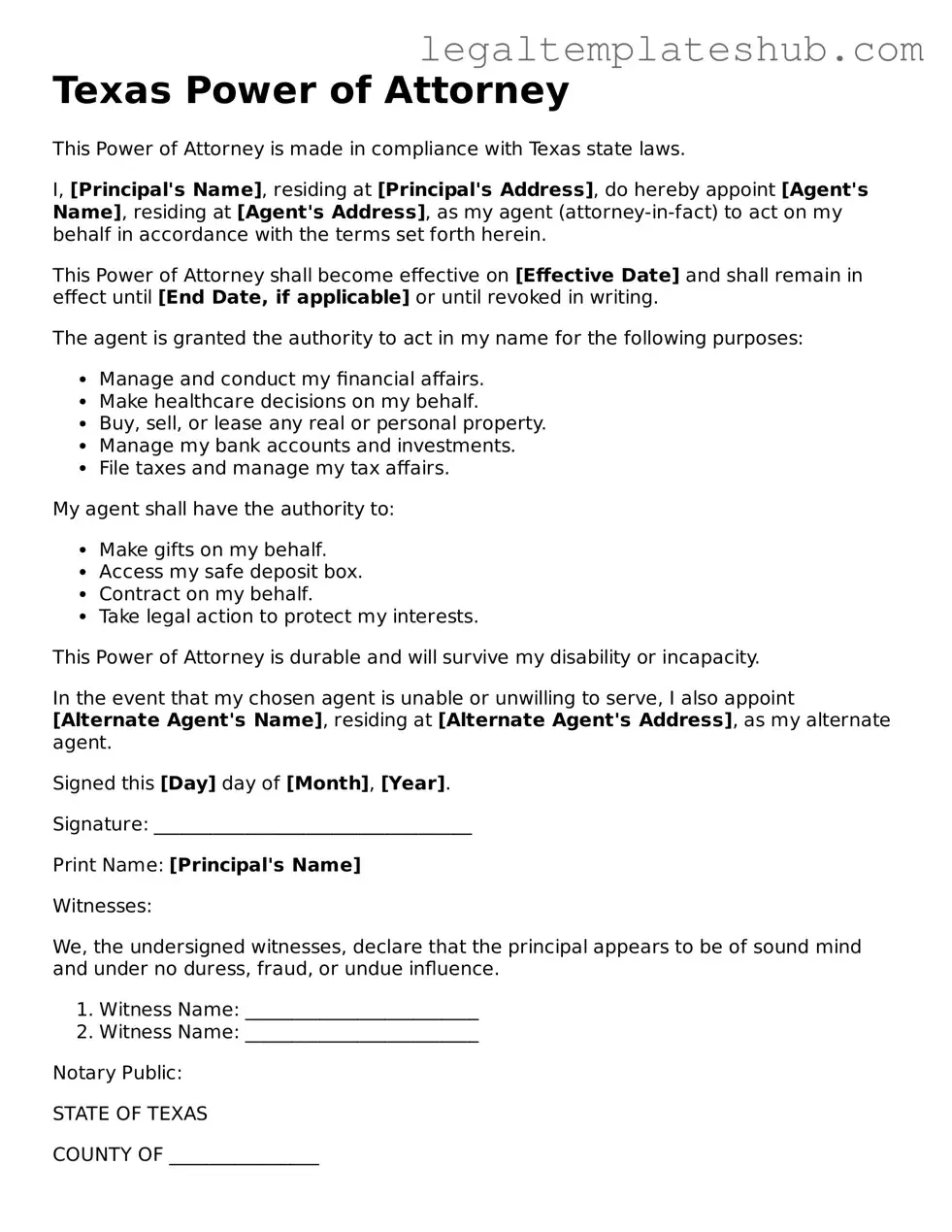Printable Power of Attorney Document for Texas
A Texas Power of Attorney form is a legal document that allows one person to grant another person the authority to make decisions on their behalf. This can include financial, medical, or legal matters, depending on the type of Power of Attorney established. Understanding this form is essential for anyone looking to ensure their wishes are respected when they cannot make decisions themselves.
Ready to take control of your future? Fill out the Texas Power of Attorney form by clicking the button below.
Access Editor
